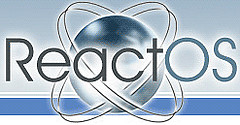
The idea is simple: Linux isn’t always the best non-Windows operating system. Windows is excellent and unbeatable for quite a few people and tasks. But neither is perfect. Almost exactly 10 years ago, a team began to search for a fix. In 1996, Linux was unusable for anyone but the most technologically ‘gifted’ and Windows 95 wasn’t anywhere near as complex as Windows today.
Originally called FreeWin95, the project had a decent idea, but terribly organized, implemented, and coded. Two years later, the dos-clone kernel was dumped, and the real project began. It was called ReactOS, and this time it was for real.
ReactOS is a 100% Open Source (mostly GPL) rewrite of the Windows Kernel. At its heart, ReactOS is an initiative to create an open-source project that is fully compatible with the all Windows NT-based drivers, applications, and services.

